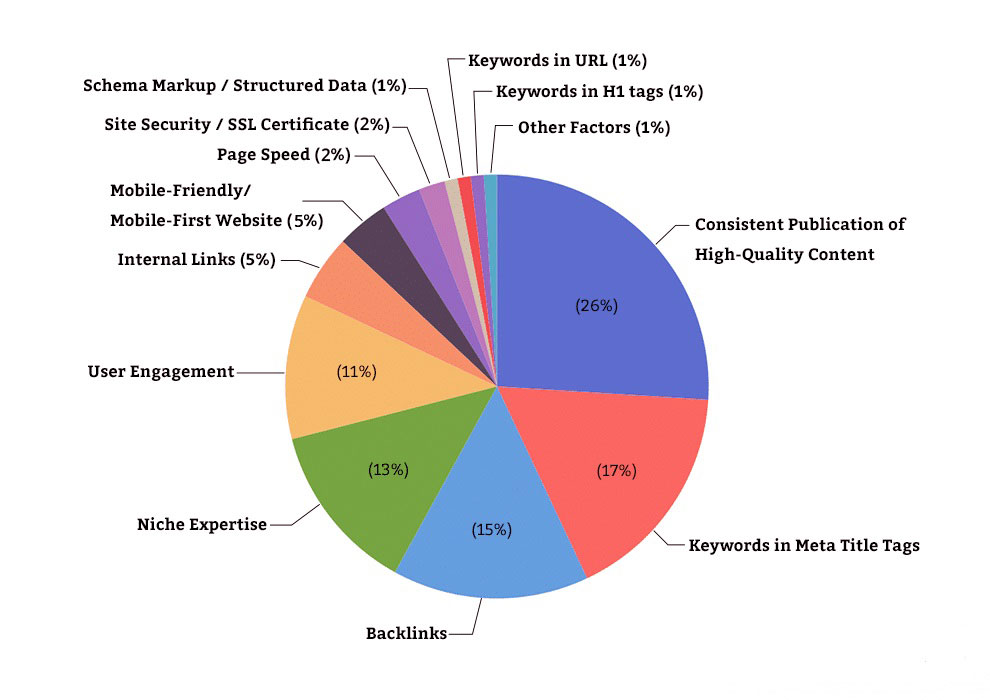SEO and SEM are two ways to get your pipeline website ranked high in the SERPs. SEO (Search Engine Optimization) refers to making changes to various aspects of your website over a period of time. In SEM (Search Engine Marketing … AdWords and other paid ads). Plumber & HVAC SEO is very competitive as you compete with many of your competitors in an area where everyone wants to be ranked in the top 3 positions.
1. Keywords
Keywords are essential in enlarging your pipeline web pages for a chance to earn a higher ranking on Google and Bing rankings. For this purpose, you need to use the keywords desired by your customers. You can get this information through the various keyword search tools available on the web. Some of them include Keyword.io, Keyword Discovery, and the WordStream keyword tool. Once you understand what keywords users are searching for related to plumbing, you need to add them to your web page.
1.1 Keywords in Title Tags
To get good SEO, you need to make sure your title tags are well-organized. The title tag is a clickable text displayed in the search result. It is to give the reader an idea of what the content of that web page is. Accordingly, he can decide whether to visit the web page or not.
1.2 Keyword in URL
When you enter keywords into URLs, it provides an appropriate signal to search engines and helps to improve the quality of your plumbing page. So, when you create a URL, make sure you match the most important keywords behind the domain name.
1.3 Keywords in Content
You can add more keywords to your content. Adding multiple keywords allows your webpage to be inserted whenever those keywords are used. Avoid the error of inserting too many keywords into your content. Doing so is called keyword stuffing, which is considered to be the black hat SEO method. If you want to use a keyword many times, make sure your content is remote.
1.4 Keyword in Meta Description Tag
Like alt tags on images and title tags, keywords in the meta description tag are useful and help search engine search to index your webpage of used keywords. In addition, the meta description is the description given below just the title tag and the URL address in the SERPs. This helps readers find previews if a web page contains the content they are looking for.
2. Heading Tags
Title tags, also known as <h1> tags, are essential for improving your pipeline web page. By title tags, search engines can determine what your webpage is about and which search query is related to it. In simple terms, it is a way to define the content of your web page and see what it is about.
3. Links
Providing internal links helps search engine crawlers to crawl through your plumbing website easily. When you hyperlink any text, ensure that it is relevant to what you link it to. In short, interlinking web pages pass page rank between them. It also keeps the readers on your website for a longer period of time. This is also important as search engines consider the amount of time the traffic spends on your website to determine the quality of your webpage. Therefore, your web page ranking improves.
4. Load Time
You can’t expect your visitors to wait more than a few seconds to load your webpage. If they find your web page taking too long to load, they will leave your pipeline website immediately. Contact your website developer and make sure your webpage does not take more than 3 seconds to load.
5. Mobile-Friendly Website
With the growing number of smartphone users, it is not wise to have an easy-to-use website. In fact, if a customer wants a plumbing service immediately, they may be able to search Google using a smartphone. Although your website is easy to use on a desktop and has a good level of search results, it will not find a good position on mobile devices if your website is not compatible with mobile. So, make sure your plumbing website is easy to use to avoid losing potential customers.
6. Content
Your content should be unique and should not be labelled. If Google finds that your content is duplicate, it will penalize your website and downgrade you. In the event that you are unable to provide alternative content, it is recommended that you take the help of a professional content marketing firm.
However, it is difficult to come up with content often hence, it is better to either have a dedicated person to create your content or take the help of a specialised firm.
Why is my Plumbing Website Not Ranking on Google?
Google and other search engines have been changing their algorithms based on what searchers are doing. The more a site is visited, the higher it will rank in the search results. Search engine optimization is not just about following SEO best practices, but about creating content that resonates with your audience and incorporates features like long-tail keywords.
Factors that Affect Your Plumbing Website Rankings
There are a number of factors that play into how well your plumbing website ranks on search engines like Google. Here are some of the key things to keep in mind:
- The quality of your content. Make sure that your content is well-written, informative, and relevant to your audience. This will help to ensure that people stay on your site and continue to engage with what you have to say.
- The structure of your website. Search engines like websites that are easy to navigate and have a clear hierarchy. This means having a well-organised website with a menu and sub-menus that are easy to understand.
- The age of your domain name. Domain names that have been around for a while tend to rank higher than newer ones. So if you’re just starting out, don’t worry too much about this factor.
- The number of inbound links pointing to your website. Inbound links from other websites show search engines that your site is popular and trustworthy. So try to get links from high-quality websites in your industry.
- Your website’s loading speed. If your website takes too long to load, people will likely click away before they even have a
Marketing Strategies
If you’re a plumber, you know that ranking in Google is essential to getting new clients. But what do you do when your plumbing website isn’t ranking? Here are some possible reasons why and what you can do about it:
- You’re not using the right keywords. Keyword research is essential for ranking on Google. Make sure you’re using relevant keywords throughout your website, including in your titles, descriptions, and blog posts.
- Your website isn’t optimized for SEO. In order to rank well in Google, your website needs to be optimized for search engines. This means making sure your website is fast, mobile-friendly, and easy to navigate.
- You don’t have enough backlinks. Backlinks are one of the most important ranking factors in Google. Make sure you’re promoting your website on other sites and getting high-quality backlinks from authority websites.
- You have a low click-through rate. If people aren’t clicking on your website when it appears in Google’s search results, that’s a bad sign. Make sure your titles and descriptions are compelling and that your website is relevant to what people are searching for.
Links
One of the most important aspects of SEO for plumbing websites is link building. In order for your website to rank highly on Google, you need to have links from other websites pointing back to your site. One way to get links is to submit your site to online directories. Another way to get links is to guest blog on other websites in your industry. By guest blogging, you can include a link back to your own website in your author bio. You can also reach out to other websites in your industry and ask for a link exchange.
User Experience
Your plumbing website may not be ranking in Google because of user experience issues. User experience is how easy it is for someone to use your website. If your website is hard to navigate or poorly designed, users will have a bad experience and are less likely to come back. Google takes user experience into account when ranking websites, so if yours isn’t up to par, it could be affecting your ranking.
There are a few ways to improve your website’s user experience. First, make sure your site is well-designed and easy to navigate. Second, add helpful and informative content that will appeal to your target audience. And third, keep your site updated regularly with fresh content to keep users coming back. By improving your website’s user experience, you’ll also be improving its chances of ranking well on Google.
Keyword Selection
One of the most important aspects of optimizing your plumbing website for Google is choosing the right keywords. Keywords are the terms or phrases that potential customers use when they search for businesses like yours. When selecting keywords, it’s important to choose ones that are relevant to your business and that have a good search volume (the number of people searching for that term). You can use keyword research tools like Google AdWords Keyword Planner to find out which keywords are being searched for in your area. Once you’ve selected a few good keywords, make sure to include them in the title and content of your blog posts.
Internal Domain Structure
If your plumbing website isn’t ranking in Google, it could be due to a number of factors. One possible reason is your internal domain structure. If your website’s internal linking is not set up correctly, Google will have trouble crawling and indexing your site, which can hurt your chances of ranking well. Make sure your website has a well-organized internal linking structure to help Google (and visitors) navigate your site easily.


